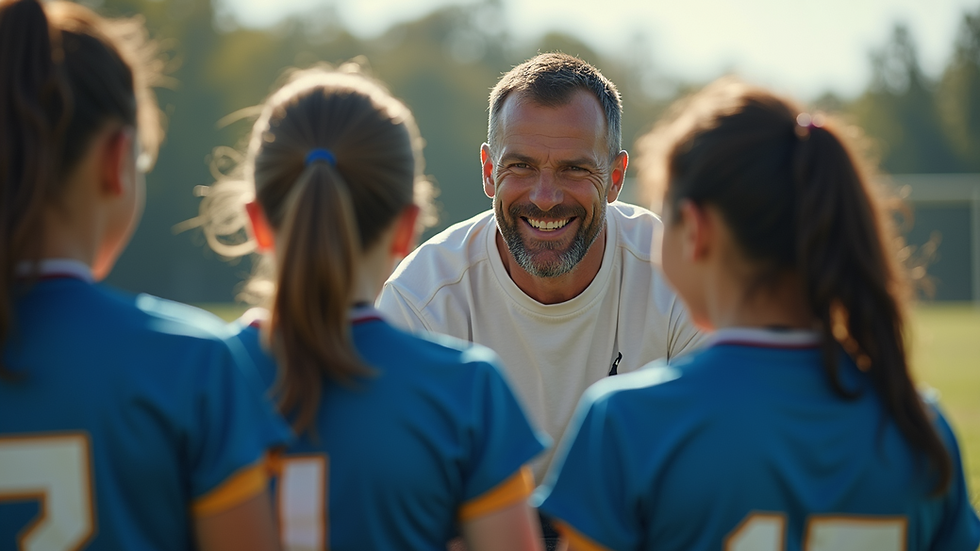Essential Resources for Child Welfare Officers in Sports
- scottthrelfall
- Sep 9
- 4 min read
In the world of sports, the safety and well-being of children should always come first. Child welfare officers play a crucial role in ensuring that young athletes are protected from harm and that they have a positive experience in their sporting activities. However, navigating the complexities of child welfare in sports can be challenging. This blog post aims to provide essential resources that can help child welfare officers effectively support young athletes.
Understanding the Role of Child Welfare Officers
Child welfare officers in sports are responsible for safeguarding the interests of young athletes. Their duties include monitoring the environment in which children participate, ensuring compliance with safety regulations, and providing support to children and their families.
These officers must be well-versed in various aspects of child welfare, including:
Legal requirements: Understanding laws and regulations related to child protection.
Best practices: Implementing strategies that promote a safe and supportive environment for young athletes.
Communication skills: Effectively engaging with children, parents, and coaches to address concerns.
Key Resources for Child Welfare Officers
1. Training Programs
One of the most important resources for child welfare officers is access to training programs. These programs provide essential knowledge and skills needed to perform their duties effectively.
Some notable training programs include:
SafeSport Training: This program focuses on preventing abuse in sports and provides valuable resources for child welfare officers.
National Alliance for Youth Sports (NAYS): NAYS offers training that covers various aspects of youth sports, including safety and welfare.
2. Guidelines and Policies
Having clear guidelines and policies is essential for child welfare officers. These documents outline the procedures to follow in various situations and help ensure consistency in decision-making.
Key guidelines include:
Child Protection Policies: These policies should detail how to handle allegations of abuse and the steps to take when a child is at risk.
Code of Conduct: A code of conduct for coaches, parents, and athletes can help set expectations for behavior and promote a positive environment.
3. Support Networks
Child welfare officers should not work in isolation. Building a support network can provide valuable resources and assistance.
Consider connecting with:
Local child welfare agencies: These organizations can offer guidance and support in handling complex cases.
Peer networks: Joining groups of fellow child welfare officers can provide opportunities for sharing experiences and best practices.
4. Educational Materials
Access to educational materials is vital for child welfare officers. These resources can help them stay informed about the latest trends and issues in child welfare.
Some recommended materials include:
Books and articles: Reading about child development, psychology, and welfare can enhance understanding and inform practices.
Webinars and online courses: Many organizations offer free or low-cost online training that can be accessed at any time.
5. Reporting Tools
Having effective reporting tools is crucial for child welfare officers. These tools help document incidents and track concerns related to child welfare.
Consider using:
Incident report forms: These forms should be easy to fill out and should capture all necessary information.
Anonymous reporting systems: Providing a way for children and parents to report concerns anonymously can encourage more people to come forward.
Building a Safe Environment for Young Athletes
Creating a safe environment for young athletes is a shared responsibility. Child welfare officers must work closely with coaches, parents, and the community to foster a culture of safety and respect.
Engaging Coaches and Staff
Coaches play a significant role in the lives of young athletes. Engaging them in child welfare initiatives can help create a safer environment.
Training for coaches: Providing training on child welfare issues can help coaches understand their responsibilities and the importance of creating a safe space for athletes.
Regular meetings: Holding regular meetings with coaches can facilitate open communication and ensure everyone is on the same page regarding child welfare policies.
Involving Parents
Parents are key partners in promoting child welfare in sports. Encouraging their involvement can lead to a more supportive environment for young athletes.
Parent education sessions: Hosting sessions to educate parents about child welfare issues can empower them to advocate for their children.
Open lines of communication: Establishing clear communication channels between parents and child welfare officers can help address concerns promptly.
Community Collaboration
Collaboration with the broader community can enhance child welfare efforts in sports.
Partnerships with local organizations: Working with local child welfare agencies, schools, and community groups can provide additional resources and support.
Community events: Organizing events that promote child welfare can raise awareness and foster a culture of safety in sports.
Staying Informed and Adapting
The landscape of child welfare in sports is constantly evolving. Child welfare officers must stay informed about new developments and adapt their practices accordingly.
Keeping Up with Research
Staying updated on the latest research in child welfare can inform practices and policies.
Subscribe to journals: Following relevant journals can provide insights into new findings and best practices.
Attend conferences: Participating in conferences can offer opportunities to learn from experts and network with peers.
Adapting to Changes
Child welfare officers must be flexible and willing to adapt to changes in laws, regulations, and societal attitudes.
Regular policy reviews: Conducting regular reviews of policies and procedures can ensure they remain relevant and effective.
Feedback mechanisms: Implementing feedback mechanisms can help identify areas for improvement and ensure that practices align with the needs of young athletes.
Conclusion: A Commitment to Child Welfare in Sports
Child welfare officers play a vital role in ensuring the safety and well-being of young athletes. By utilizing essential resources, engaging with coaches and parents, and staying informed, these officers can create a positive and supportive environment for children in sports.
The journey toward safeguarding young athletes is ongoing, and it requires a collective effort from everyone involved in sports. By prioritizing child welfare, we can help ensure that every child has the opportunity to enjoy sports in a safe and nurturing environment.




Comments